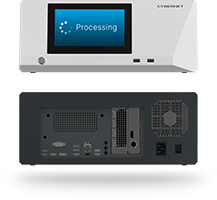It's impossible to escape the discourse surrounding generative artificial intelligence (AI). The ability of generative AI to process and interpret information promises to change almost every industry imaginable, including healthcare.
While still in its nascent stages, AI implementation in healthcare is poised to revolutionize multiple sectors, from diagnostics to documentation to even the surgery theater. In today's article, we'll review some of the most important areas of healthcare where AI implementation can make waves.
Documentation
Documentation is an incredibly time-consuming process for healthcare providers, as they must exhaustively write down information and fill it out electronic health records (EMRs) while treating patients. In fact, documentation takes up so much time that providers must often do it outside of work hours and call it "pajama time." The average provider spends 15 hours of pajama time every week.
Many hope that generative AI can take over most note-taking and form-filling responsibilities, allowing providers to focus more on the patient and their treatment. A generative AI capable of voice recognition can follow a provider and patient's conversation in real-time, taking notes in the standard SOAP (Subjective, Objective, Assessment, and Plan) format. Providers can then review these notes, making any necessary edits as they go on their medical tablets.
Generative AI can also transfer these notes into standardized formats, such as SNOMED CT (Systematized Nomenclature of Medicine - Clinical Terms), which is used for the electronic exchange of health information. This further reduces providers' bureaucratic workload, letting them focus purely on diagnosis and treatment.
Drug Development and Discovery
Developing new pharmaceutical drugs is a process that can take years and potentially cost billions of dollars to do so. Generative AI, with its ability to process colossal amounts of data and generate new conclusions from it, is being explored as a way to speed up this process and reduce costs.
One area where generative AI is being applied is molecule generation, where the AI simulates molecular structures and how they interact with the human body. This allows researchers to explore new pharmaceutical molecules and find new drugs in a fraction of the time it once took.
AI's ability to gather data from multiple datasets, such as patient data, genetic information, and biobank studies, also helps create precision drugs, which are designed for a specific individual's condition. While impractical under the current standard, generative AI can dramatically accelerate the process and make precision drugs a viable treatment method.
Diagnostic Imaging
The most critical step in treating a patient is often identifying their condition in the first place. Training AI models on visual symptoms of disease allow them to identify those symptoms in real-life patients.
One great example of this is in endoscopies and identifying potentially cancerous lesions. Colorectal cancer is one of the most common types of cancer and is the cause of over 50,000 deaths per year. A key step to preventing colorectal cancer is identifying lesions in the patient's colon and determining if they are benign or premalignant, but this can be challenging even for experienced endoscopists.
However, an AI can be trained on thousands of endoscopic images of lesions, far more than a human will see in a single lifetime. This lets the AI identify and highlight lesions on a medical computer's screen during a colonoscopy, ensuring that providers don't miss a potentially dangerous tumor. Similar methods are being developed for diagnostic imaging techniques such as X-rays, MRIs, and CT scans.
AI-Assisted Surgery
Another angle for AI implementation in healthcare is as an aid for surgeons. By analyzing thousands, even millions of videos of surgery, an AI can predict the next 15 to 30 seconds of an operation, guiding surgeons step by step through a procedure and preventing them from missing steps throughout.
AI can also take over robotic surgery duties and perform basic tasks such as closing port sites or tying sutures off. This, in turn, lets surgeons focus on more demanding surgical steps. Real-time AI image enhancement also makes it easier to visually identify anatomical elements, such as tumors and lesions mentioned previously.
Final Thoughts
While the technology is still in its infancy and will doubtless undergo many trials and revisions, implementing AI in healthcare promises to deliver better results for patients and ease the burden on providers. However, taking advantage of AI-powered programs will require the right hardware to support them.
If your healthcare group is looking for medical AI box PCs to take advantage of this new evolution, contact the team at Cybernet Manufacturing. Our medical-grade computers and tablets balance processing power with design features and certifications necessary for healthcare environments, such as IP 65-rated front bezels and IEC 60601-1 certification.
Join the conversation and connect with us on this and other relevant topics - Follow us on Facebook, X, Instagram, LinkedIn, Youtube, and TikTok.

